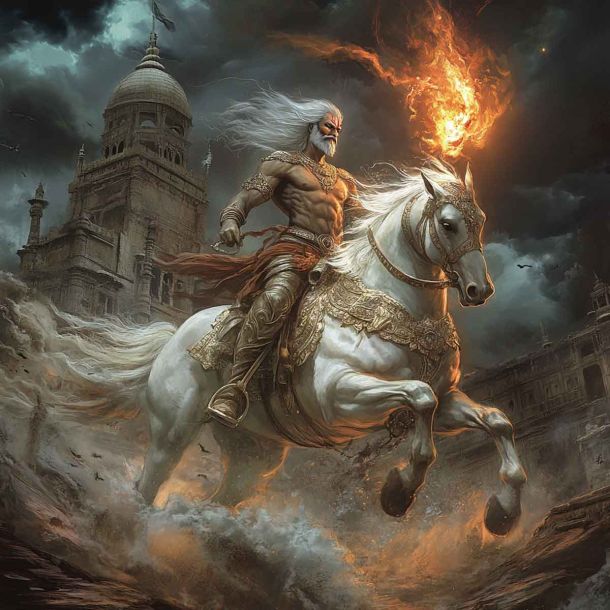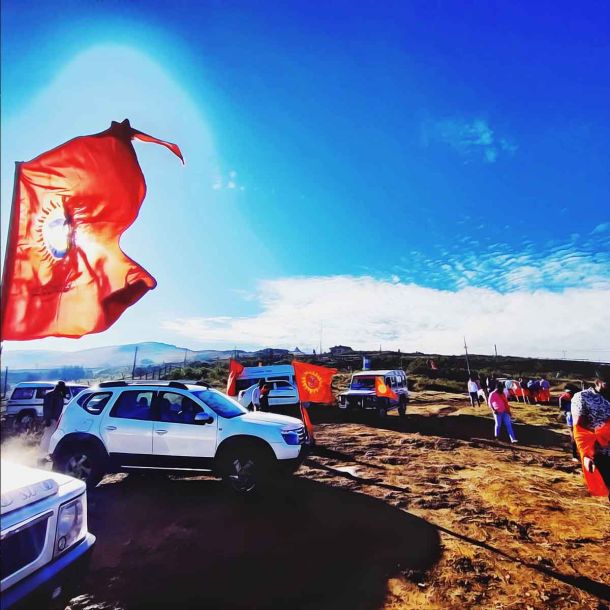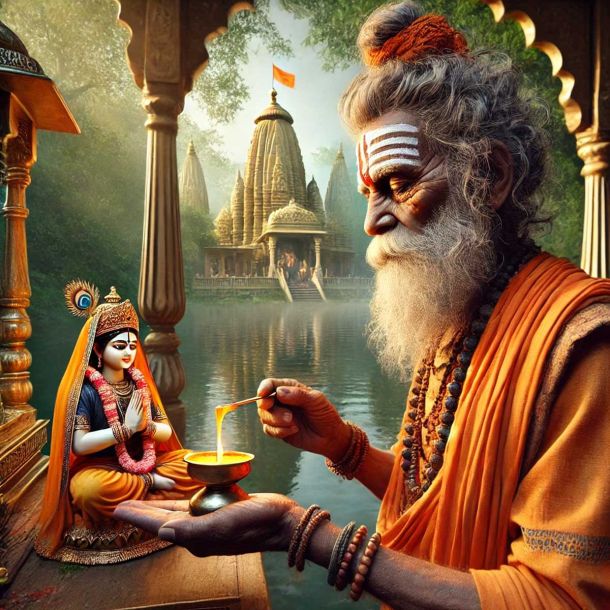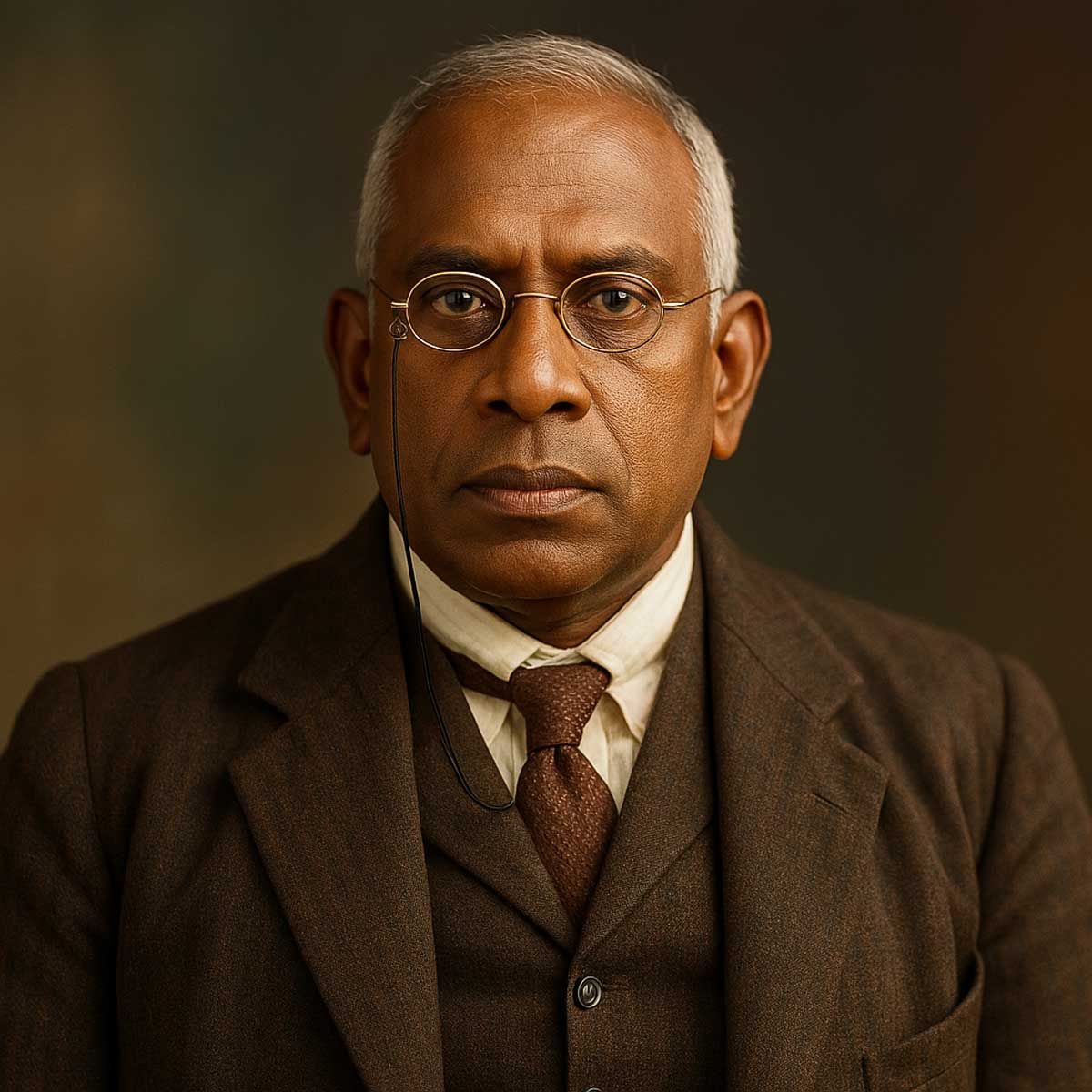More Coverage
Twitter Coverage
Satyaagrah
Written on
Satyaagrah
Written on
Satyaagrah
Written on
Satyaagrah
Written on
Satyaagrah
Written on
Join Satyaagrah Social Media
"When Shiva beats his DAMRU DAM DAM- Evil Shakes and the Wise Awakes": Sri Endala Mallikarjuna Swamy Temple in Ravivalasa, Andhra Pradesh is one of the largest Swayambhu Shivalinga which kept growing has its origins in tretayug of Ramayana
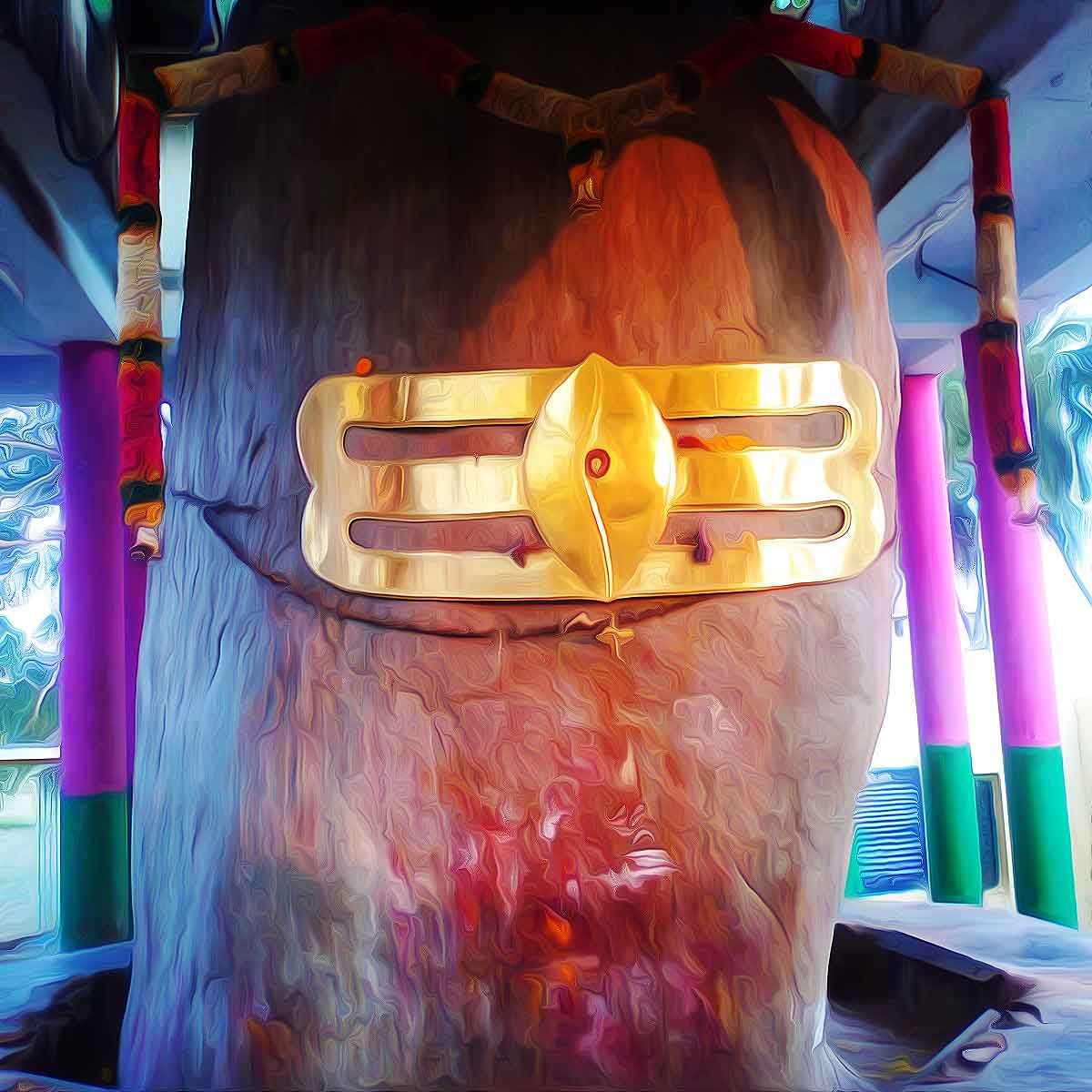
An ancient temple dedicated to Sri #Endala_Mallikarjuna_Swamy is in the village of Ravivalasa. This linga believed to be swayambhu (self-manifested), measures about 20m in height and 3m in width. According to legend, the Pandavas visited this temple during their exile and met Maharishi Markandeya here.
|
#rayavalasa_temple is situated in the village "Ravivalsa " in Tekkali Mandalam of #Srikakulam district of Andhra Pradesh state, India.
Ravivalasa is famous for its Sri Endala Mallikarjuna Swamy Temple. There is a belief that people will get rid of their skin diseases like scabies, ringworm, impetigo, and other fungal skin infections after seeing this god.
In the Tretayuga on his return way, after Ravana's death, to Ayodhya, Rama took a rest on the SUMANTHA hills of this forest area of Ravivalasa along with his army and followers. Sushenudu who was a divine doctor in the Rama followers felt happy and wondered on seeing the Medicinal plants and barking around in this forest but the people were unhealthy and suffering. He wants to do something good for the people. He expressed his desire to stay on this hill and do TAPASSU for Lord Shiva. Rama granted permission and left for Ayodhya leaving Sushena here. Sushena worshipped Shiva years and years and used to serve the people around with the Medicinal plants. As he was not able to bear the separation of Rama, chanting Rama nama, he died on the Sumantha parvatham.
After some years, Rama sent Hunuma to inquire about the whereabouts of SUSHENA. Hanuma(Anjaneya) came to Ravivalasa hills SUMANCHA and found the skeleton/dead body of SUSHENA, thought that SUSHENA was died and buried the skeleton, put some jasmine flowers (Malle pulu), covered with deerskin, returned to Ayodhya and told everything he did. Rama after hearing the sad news came to this SUMANCHA HILLS along with Sita, Laxmana, and Hanuman.
|
Hanuman lifted the deer skin to show the skeleton to Rama and Rama tried to insert his hands to uncover the buried body of Sushena under the Jasmine flowers but found the body of Sushena converted to Shiva Linga on his contact in a side heap of Malle-pulu (jasmine flowers), instead of the body of the SUSHENA. All are astonished and shocked, took a bath in the nearby pond, and started worshiping the Shiva-linga.
As they started doing the pooja the Linga began to grow till the end of the pooja. Air flowing down-warda the ling with the breeze from the medicinal plants, giving good health to the people. As it is growing Rama was not built any temple there. The name from Jasmin = Malle, deer skin = Aajinamu, so a linga worshiped with MallePoolu and covered with deer skin = Mallekajina Swami and it was modified to MALLIKAJINA Swami. The pond is Named as SEETHA KUNDAMU.
The history of the temple can be traced to the Mahabharata period. Legend has it that Pandavas while in exile visited this temple and met Markandeya Maharshi, who appraised them of the importance of the Ravivalasa shrine. Later, Arjuna did thapassu (worship) to this linga. Lord Shiva gave darshan and asked about his desire. Arjuna requested Shiva to keep his name along with Lord's name. Later on Mallikajina swamy became Mallikarjuna Swamy.
On Maha Sivaratri and Kartika Mondays, large gatherings of devotees worship this temple's deity. Tarla's family used to worship for over a hundred years to this lord (vamsha parampara dharma karthalu) before it is taken over by the State Government's Endowments department. It is strongly believed that the lord will bless people and fulfill all their desires, promote health and wealth in their lives and remove sins. Lord is worshipped by people from West Bengal, Orissa, and coastal Andhra Pradesh.
|
Saiva Cult held marking Sivaratri’s eve
Dr. E. Sivanagi Reddy, Archaeologist, and CEO, of The Cultural Centre of Vijayawada and Amaravati (CCVA), said that the earliest Sivalinga, dating to the 1st century BC, is also from Andhra Pradesh at Gudimallam village in Chittoor district and explained the origin and spread of the Siva Cult in Andhra right from the Satavahanas (1st century AD) till the Vijayanagara period in the form of Sivalinga Mukhalinga (with Siva’s faces on it) and also Siva in different aspects of iconic form as Arthanariswara, Chandrasekhara, Nataraja, and Gajasamhara Murthy. Dr. Reddy also informed that the earliest Nataraja sculpture also comes from Andhra Pradesh as seen at the Nataraja Cave, Mogalrajpuram in Vijayawada dating back to the 4th -5th centuries AD.
Tracing the origin of this highest Sivalinga at the Ravivalasa to the Ramayana Period (exact date not known), was brought under a shelter by Brindavana Harish Chandra Jagaddev, the then Jamindar of Tekkali in 1870. Since then thousands of devotees are visiting it from AP and Odisha. Satavadhani Dr. Palaparti Syamalananda Prasad, a famous expert in Avadhanam Vidya, enumerated various Saiva rituals associated with the Saiva cult over a period of time.
Another participant, Dr. Gumma Samba Siva Rao, Vice Principal, Andhra Loyola College, presented various references to the Saiva cult in Telugu Literature by reading poems from Telugu Prabandhas. Dr. Venna Vallabha Rao, Subhakar Medasani, Secretary, Amaravati Buddha Vihara, M. Tirumal Srinivas, Director, Malaxmi Infra Ventures, Dr. Valiveti Sivarama Krishna, Editor ‘Parthatejam Magazine, Dr. Movva Srinivasa Reddy, Department of History, Andhra Loyola College, Mr. Golla Narayana Rao, Secretary, Andhra Arts Academy and students of History from Andhra Loyola College also participated in the deliberations of the symposium.
|
 Support Us
Support Us
Satyagraha was born from the heart of our land, with an undying aim to unveil the true essence of Bharat. It seeks to illuminate the hidden tales of our valiant freedom fighters and the rich chronicles that haven't yet sung their complete melody in the mainstream.
While platforms like NDTV and 'The Wire' effortlessly garner funds under the banner of safeguarding democracy, we at Satyagraha walk a different path. Our strength and resonance come from you. In this journey to weave a stronger Bharat, every little contribution amplifies our voice. Let's come together, contribute as you can, and champion the true spirit of our nation.
 |  |  |
| ICICI Bank of Satyaagrah | Razorpay Bank of Satyaagrah | PayPal Bank of Satyaagrah - For International Payments |
If all above doesn't work, then try the LINK below:
Please share the article on other platforms
DISCLAIMER: The author is solely responsible for the views expressed in this article. The author carries the responsibility for citing and/or licensing of images utilized within the text. The website also frequently uses non-commercial images for representational purposes only in line with the article. We are not responsible for the authenticity of such images. If some images have a copyright issue, we request the person/entity to contact us at satyaagrahindia@gmail.com and we will take the necessary actions to resolve the issue.
Related Articles
- In a significant discovery Hindu temple structure with ornate columns found inside a mosque in Mangaluru, locals suspect the presence of a temple in the past: VHP leaders asked to stop work till documents verified
- In a compelling twist, Ayodhya's Shashikant Das Maharaj counters claims about Ram Mandir's 'incompleteness', citing Somnath Temple's historic Pran Pratishtha, he enlightens, challenges perceptions, and bridges past & present in a culturally rich narrative
- "The soul has this proof of divinity: that divine things delight it": Journey into the Realm of Transcendence: Discover the Mystical Presence of Gudimallam Sacred Shivling where every 60 years the main chamber becomes engulfed in a flood, defying nature
- "Restoration & hope is available each time you turn to Sanatan": Besakih Mandir on slopes of Mount Agung in Eastern Bali is largest, holiest & important temple of Hinduism in Indonesia for history of its culture, archeology, architecture, social & economy
- After removing 500 tons of garbage, 18th-century old stepwell to soon serve with clean, fresh groundwater gushing from 53 feet deep water stream: Nalla Pochamma Temple, Telangana
- ‘Lord Shiva helps creation sprout even from ruins, Humanity always wins over terrorism’: PM Modi launches key projects at Somnath
- Hours after Shivling discovered inside disputed Gyanvapi, AIMIM chief Asaduddin Owaisi provokes Muslims against court-ordered proceedings amidst chants of ‘Naara-e-Takbeer’ and ‘Allahu Akbar
- 7 brass kalasams atop towers of Manjal Neer Kootha Ayyanar temple looted: Tamil Nadu
- Mahakal Temple in Ujjain to get expanded complex with Rs 714 crore in such a way that there will be a feeling of grandeur and divinity: Another reason for devotees to celebrate after Kashi Vishwanath corridor
- Valiant Marathas and the far-reaching effects of the loss of 3rd battle of Panipat: Jihad of the temple destruction
- "Devotion evokes the mystery without which the world would not exist": Ancient Naga Devatha temple at Vidurashwatha located in Gauribidanur of Chikkaballapur district, Karnataka where people do prathishtapana of the divine naga to ward off Naga dosha
- Major boost for tourism as Indian Railways set to roll out Vande Bharat trains to Khajuraho, a World Heritage Site in Madhya Pradesh: UNESCO-protected temples and monuments draws tourists from worldwide
- Hindu side filed reply in Supreme Court: 'Gyanvapi property belonged to Lord Adi Vishweshwar since time immemorial, even before the Islamic rule in India, and hence cannot be handed to anybody'
- Lalitadiya Muktapida: A great successor of Karkota Dynasty who defeated Arabs and subjugated Turks
- Renowned Archaeologist KK Mohammed confirms, '27 temples were demolished to build Quwwat-ul-Islam Mosque near Qutub Minar in Delhi, hiding truth is a mistake': Remnants of temples, Lord Ganesha temple found

